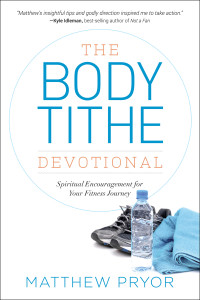 If you want to train for an obstacle race course (which are all the rage these days), but are unsure how to begin, you’ve come to the right place. Mud runs and obstacle race courses are popping up everywhere as people look for a fun new way of challenging themselves physically. However, most people seem to focus more on the “fun” they’ll be having rather than the “challenge” it will present. And as a result, they’re huffing and puffing a quarter mile into the race. Or worse yet, they’re getting hurt.
If you want to train for an obstacle race course (which are all the rage these days), but are unsure how to begin, you’ve come to the right place. Mud runs and obstacle race courses are popping up everywhere as people look for a fun new way of challenging themselves physically. However, most people seem to focus more on the “fun” they’ll be having rather than the “challenge” it will present. And as a result, they’re huffing and puffing a quarter mile into the race. Or worse yet, they’re getting hurt.
So first off, the fact that you even want to train for an obstacle race course is a good sign. Don’t wing it and regret it!
I celebrated my P90X2 results by doing my first obstacle race course, one called The Spartan Race. I got in really good shape and the Spartan Race still humbled me. So I followed that up with a month of Insanity: The Asylum and more consistent running. I did The Warrior Dash and my results were far superior because I knew better on how to train for an obstacle race course.
And that brings me to my second point: to train for a road race and to train for an obstacle race course are two very different things. You can get away with not doing strength training for an average 5K (though you’d be better served by doing some). But to train for an obstacle race course by only running a few times a week is like practicing for a basketball game and only practicing your dribbling and never your shooting. You might be able to dribble to the other side of the court, but good luck getting the ball in the hoop.
Thirdly, be intentional when you train for an obstacle race course. A little of this and a little of that won’t get’er done. You want to be deliberate and have a regimented training program. And fortunately, I’ve got your back. Below you will find an eight-week training program for a 5k obstacle race course . Some races like Spartan Beast and Tough Mudder are much longer. You can still use this program but you’ll want a better base (that is, the greatest amount of mileage you can do without too much effort) and/or you’ll want to increase your mileage.
Train for an Obstacle Race Course: Run Days
If you’re starting from scratch with running, the goal is to not stop. Walks breaks are okay… stopping is not. If you’re taking walk breaks, you’ll build up to running the full distance by running X minutes and walking Y. For instance, you can make it your goal to run five minutes without stopping and then walk for one. Do this until you complete your mileage for that day. Then on the next run, shoot for six minutes of running for every one minute of walking. And the next run, seven minutes of running for each minute of walking, with the long-term goal of being able to run the total mileage without stopping. And since the mileage is gradually increasing, you’re getting the benefit of both increasing your ability to run while increasing your overall mileage. It’s a win-win.
If you’re already a runner, chances are you know what to do on run days so you’ll be working more on speed. But I wouldn’t make every run speed work. You’ll want some tempo runs as well. But again, if you’re a runner, you probably already know this.
Train for an Obstacle Race Course: Strength Days
Obstacle courses require a surprising amount of core (abs, lower back, hips), back, and thigh strength. The whole body is engaged, but these muscle groups will be particularly taxed from all the crouching, pulling, and crawling you’ll be doing. So you’re going to want to do some overall body work, paying a little extra attention to core, back, and thighs.
But strength alone isn’t enough. Ideally, it’s paired with some explosiveness and the best way to build that is to do your best to combine strength and explosive moves sequentially, with little rest between. You can see from my P90X2 results that Beachbody programs are the real deal. So my first recommendation is to do a Beachbody program like P90X, P90X2, Insanity, or Insanity: The Asylum. All these programs will help to varying degrees with strength, speed, and explosiveness. Probably the best combination would be a P90X or P90X2 hybrid with Insanity: Asylum. If you don’t have one of these programs, you can order them directly through me and because I’m a coach, you’ll get some bonus workouts.
Gym Optional’s goal is to help you get fit anywhere. So if you don’t belong to a gym or have the space/equipment in your house, apartment, office, or dorm room to order one or more of these workout programs, I can still help. My recommendation would be to work through the obstacle race course strength workout below as quickly as you can but with good form, doing as many repetitions as possible (or hold the movement for as many seconds as possible) for each exercise. When you’ve completed the list the first time, take a 60-90 second break, and do it a second time. One more 60-90 second break, and complete the list for a third time. The moves don’t require any special equipment and are linked to videos showing proper form. This program should take 25-40 minutes depending on your athletic ability.
Train for an Obstacle Race Course: Nutrition
I say it all the time: your results are only as good as your nutrition. When you train for an obstacle race course, this axiom is no different. You know what, I’ll even take it one step further: 80% of your results come from your nutrition. Garbage in = garbage out. If you’re going to put the time and effort into your exercise, why not get serious about your eating? All of the programs I’ve recommended come with nutrition guides. Follow them! And if you’re not taking it already, I would start taking Shakeology. Shakeology is a meal replacement drink that will help your energy levels, digestion, satiation, and much more as it’s packed with phytonutrients, antioxidants, super foods, digestive enzymes and more. It helped me with my P90X2 results and I recommend it to everyone. I’d also recommend you start a food journal to track your nutrition (which is half of the fitness tracking equation). I’m partial to Loseit.com and Myfitnesspal.com myself. They’re both free, have a huge library of foods, and some customizable settings. But if you have a different one you like, by all means… the best food journal is the one you’ll actually use.
Now tracking your nutrition is only helpful if you know what to shoot for nutrition-wise. I’ve got you covered there as well. Open a FREE account on www.teambeachbody.com (following this link will also make me your coach… again, for FREE!) and you’ll have access to some great tools, including a caloric needs calculator. Once you know your daily caloric allotment, plug it into your food journal program and start tracking.
In summary, there’s no rule that says you have to train for an obstacle race course for it to be fun. But the better shape you’re in, the better you’ll do, the less likely you’ll be injured, and the more fun you’ll have. So why not separate yourself from the pack and actually train for an obstacle race course? Get fit. Be fast. Have fun.
You’ve been challenged… now GO!
[tip] NOTE: This post originally appeared at Gym Optional (GO!), a general fitness site run by BTU Founder Matthew Pryor. GO! readers have access to some exclusive content and useful tools, such as the Smoothie Wizard. If you visit, be sure to register for FREE email updates! [/tip]

